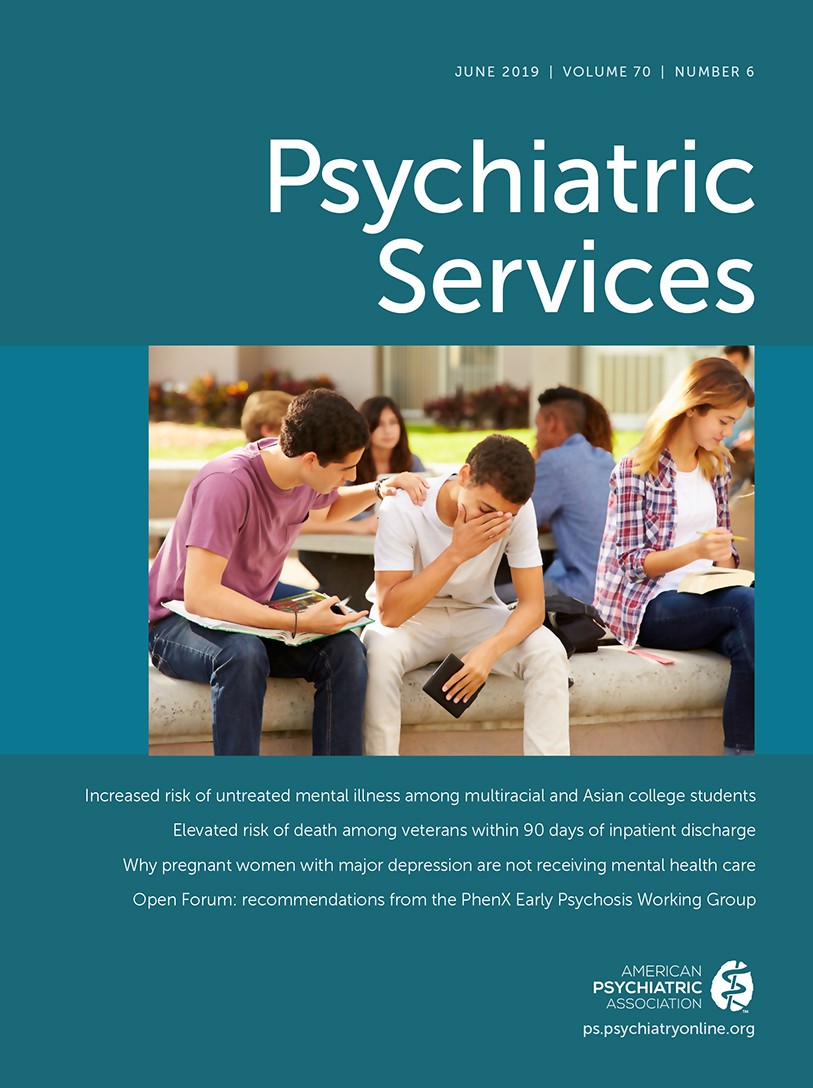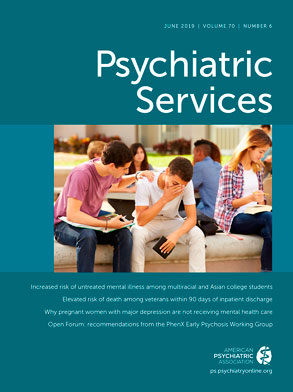TO THE EDITOR: Opioid overdose deaths continue to increase in the United States and have reached epidemic levels. Drug overdose resulted in 63,632 deaths in 2016, representing a 21.4% increase from 2015; two-thirds of these deaths involved an opioid (
1). Moreover, in 2017, approximately 47,600 Americans died from opioid overdose, including from prescription opioids and heroin (
2).
This issue has become a public health crisis with devastating consequences. The World Health Organization supports community management of opioid overdoses by giving people who are likely to witness opioid overdose access to naloxone so that they may respond to an opioid overdose and possibly save lives (
3). Naloxone spray is indicated for emergency use outside the hospital to reverse suspected opioid overdose (
4).
The authors developed a pilot program on an inpatient unit that trains patients and their families to recognize and respond to opioid overdose. We are proud to offer this multidisciplinary program, which may help reduce opioid overdose deaths.
The initial step of our program was to apply to the New York State Department of Health for the hospital to become an Opioid Overdose Prevention Program (OOPP). The New York State Office of Mental Health (OMH) supplied naloxone kits without cost. In two grand round forums, OMH provided education to all on the unit on how to respond to an opioid overdose and administer naloxone spray. Participants included psychiatrists, psychiatric nurse practitioners, social workers, nurses, and substance abuse counselors. Unit staff trained patients and families individually and in groups during the hospital stay, including education on the state’s Good Samaritan laws, which provide legal protection to people who assist those who are in danger (
5).
Over a 3-month period, 42 of 90 (47%) patients with psychiatric disorders and co-occurring substance use disorders received the opioid training. Of these 42 participants, 25 patients (60%) agreed to receive a naloxone kit (76% [N=19] were male, mean±SD age was 43, and 92% [N=23] had an opioid use disorder). The 17 patients who refused to receive naloxone kits were males living with their families; these men cited the stigma of being a substance abuser and fear of being labeled as an active user as reasons for their refusal.
After discharge, one of the patients who had received the training and a naloxone kit reported a successful overdose reversal. The patient was able to identify his neighbor’s crisis as an opioid overdose, and he used the naloxone spray and contacted emergency medical services. Pleased that he had saved his neighbor’s life, the patient called to inform us about his intervention and to request another kit. We provided a list of pharmacies found on the OMH OOPP Web site that provide the kit at no or low cost.
The program started in April 2018, and staff members continue to provide opioid education during morning rounds, community meetings, and family meetings. We are planning to expand the program to the other inpatient units in the hospital and to conduct a community lecture series to educate the surrounding neighborhood on the opioid crisis.
In summary, facing the opioid crisis and reducing deaths from opioid overdose require a collaborative approach involving different health organizations and the affected communities. At the hospital level, a multidisciplinary approach to training patients and their families can save lives. We encourage clinicians in inpatient services to generate programs in order to create a culture of training and education on opioid overdose.

